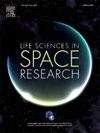前段光学相干断层扫描(AS-OCT)用于国际空间站和未来行星航天:临床相关性和技术实施
IF 2.8
3区 生物学
Q2 ASTRONOMY & ASTROPHYSICS
引用次数: 0
摘要
太空飞行对眼部健康提出了独特的挑战,在考虑未来前往火星及更远的地方执行长期任务时,必须应对这些挑战,特别是增加眼球前段的风险。在国际空间站(ISS)上使用海德堡公司的 Spectralis 光学相干断层扫描(OCT)2 模块对眼球后段进行了大量研究,但对眼球前段的评估却没有这么广泛。尽管 Spectralis 具备通过前段模块(ASM)进行前段成像的功能,可将 OCT 转变为前段 OCT(AS-OCT),但有关微重力和太空飞行对前段影响的信息却十分有限。前段成像可以获得角膜、前房角度和深度、虹膜和晶状体等结构的高分辨率细节,而宇航员在太空飞行期间所处的特殊环境可能会对这些结构产生影响。我们主张在国际空间站上和太空飞行期间常规使用 AS-OCT 进行眼部检查,以深入了解眼部发生的变化,并帮助指导可能面临的各种前段病变的治疗,最终使当前和未来的太空旅行工作受益。本文章由计算机程序翻译,如有差异,请以英文原文为准。
The Case for Anterior Segment Optical Coherence Tomography (AS-OCT) for the International Space Station and Future Planetary Spaceflight: Clinical Relevance and Technical Implementation
Spaceflight presents unique challenges to ocular health which must be addressed when considering future long-term missions to Mars and beyond, specifically with increased risk to the anterior segment of the eye. While the posterior segment has been heavily researched via examinations with Heidelberg's Spectralis Optical Coherence Tomography (OCT)2 Module aboard the International Space Station (ISS), evaluation of the anterior segment is not as extensively performed. Despite the capabilities of the Spectralis, which allows for anterior segment imaging via the Anterior Segment Module (ASM), transforming the OCT into an Anterior Segment OCT (AS-OCT), there is limited information available regarding anterior segment effects due to microgravity and spaceflight. Imaging of the anterior segment allows for high resolution details of structures such as the cornea, anterior chamber angles and depth, iris, and lens that may all become affected due to the unique environment astronauts are exposed to during spaceflight. We advocate for the routine use of AS-OCT in ocular examinations aboard the ISS and during spaceflight, offering valuable insight into ocular changes that occur and to help guide management for various anterior segment pathologies one may face, ultimately benefitting both current and future efforts for space travel.
求助全文
通过发布文献求助,成功后即可免费获取论文全文。
去求助
来源期刊

Life Sciences in Space Research
Agricultural and Biological Sciences-Agricultural and Biological Sciences (miscellaneous)
CiteScore
5.30
自引率
8.00%
发文量
69
期刊介绍:
Life Sciences in Space Research publishes high quality original research and review articles in areas previously covered by the Life Sciences section of COSPAR''s other society journal Advances in Space Research.
Life Sciences in Space Research features an editorial team of top scientists in the space radiation field and guarantees a fast turnaround time from submission to editorial decision.
 求助内容:
求助内容: 应助结果提醒方式:
应助结果提醒方式:


